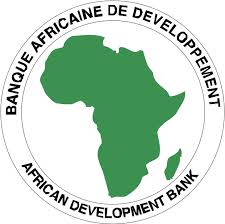Abidjan, Côte d’Ivoire, June 7, 2017 – Efforts by the African Development Bank (AfDB) to upgrade Africa’s agriculture sector is yielding good results with about 5.6 people benefiting from the Bank’s interventions in the past year.
 Among other things, AfDB plans scale up its focus on regional integration in 2017 as an important part of its development work with the planned launch of a Regional Integration Strategy.
Among other things, AfDB plans scale up its focus on regional integration in 2017 as an important part of its development work with the planned launch of a Regional Integration Strategy.
These were some of the details pulled from the Annual Development Effectiveness Review 2017 (ADER) – the latest edition of the Bank’s key monitoring and tracking tool released on May 24, 2017 at the Bank Group’s Annual Meetings in Ahmedabad, India.
“Agriculture is already central to the lives of Africans, providing 60 percent of jobs across the continent. Decades of underinvestment and recurrent drought have restricted productivity, reduced incomes, and hindered nutrition and food security. Investing in agriculture is one of the most direct ways of generating domestic, inclusive and sustainable growth,” AfDB President, Akinwumi Adesina said at the report launch.
The 2017 ADER entitled “Transforming Africa – Unlocking Agriculture’s Potential”, outlines recent economic and social trends across the continent, particularly those relating to the Bank’s “High 5” priority areas: Light up and power Africa, Feed Africa, Industrialise Africa, Integrate Africa, and Improve the quality of life for the people of Africa. It also reviews how well the Bank has achieved value for money in making a difference in people’s lives.
It analyses the opportunities and challenges facing Africa in the coming years, assesses how well the Bank has performed against its objectives, and discusses how the Bank will support Africa in achieving the inclusive and sustainable development that is highlighted in the Bank’s Ten Year Strategy.
The Bank met its target in assisting 597,900 people of increase their use of technology. In Nigeria alone, the AfDB trained 733 people and provided irrigation pumps and agro-processing equipment. It built or rehabilitated 520 kilometres of feeder roads, provided farmers with access to 2,300 tonnes of inputs and delivered increased access to finance. It also supported improved water management on 37,600 hectares, the report noted.
In The Gambia, the Bank Group improved land and water management practices for over 68,400 people, significantly reducing soil erosion, controlling salinity and increasing rice yields above our target. It also increased the yields of a wide range of crops through our assistance to agricultural research networks, training around 17,000 research and extension staff and benefiting an estimated 698,000 farmers.
On regional integration, the Bank will continue to prioritise regional infrastructure investment and the development of soft infrastructure, including institutional capacity, trade facilitation and financial infrastructure. It will give high priority to mobilizing resources from the public and private sectors, to meet the infrastructure deficit. For agriculture, the Bank’s infrastructure investments will foster larger and more efficient markets and create the economies of scale needed for competitiveness and trade, the report said.
This is expected to lead to significant investment, increase agriculture’s export potential, and put downward pressure on domestic prices of food, helping to reduce food insecurity.
The ADER observed that the Bank also provided better access to transport services to 7 million people, and constructed, rehabilitated or repaired 2,200 kilometres of road over the last year. This is in addition to directly delivering 1.6 million jobs and training 652,000 people.
Adesina highlighted how the Bank is improving the lives and livelihoods of hundreds of millions of Africans in agriculture, helping women to get better access to land, finance and technology, and young people to get secure and sustainable jobs in agriculture-related industries.
For the first time, ADER 2017 identified lessons in each priority area. In agriculture, for instance, operations now make clear that procurement must be in sync with the seasons, and beneficiaries must be involved in planning and implementation.
ADER 2017 also reflects a new Results Measurement Framework based on theories of change that links Bank actions to its priorities for Africa, the High 5s.
The Bank has made great strides in implementing its new Business Development and Delivered Model anchored around the need to work closer to clients and with increased diversity among its staff. Women now make up 60% of the top management positions in the Bank’s five new regional hubs.
This review takes into account those institutional changes and is structured around a new Results Measurement Framework based on theories of change that link the Bank’s actions to its priorities for Africa.
“To boost sustainability and development impact, we have hardwired our new Results Measurement Framework and Business Delivery Model into project design,” said Simon Mizrahi, AfDB’s Director for Delivery, Performance Management and Results.
All these changes will help achieve the structural transformation outlined in the Bank’s Ten Year Strategy. The High 5 priorities are an integral part of that effort and will remain at the centre of the Bank’s ambitious plans to support Africa’s transformation within a decade.
Read the full report: http://bit.ly/2qY5ZMj
